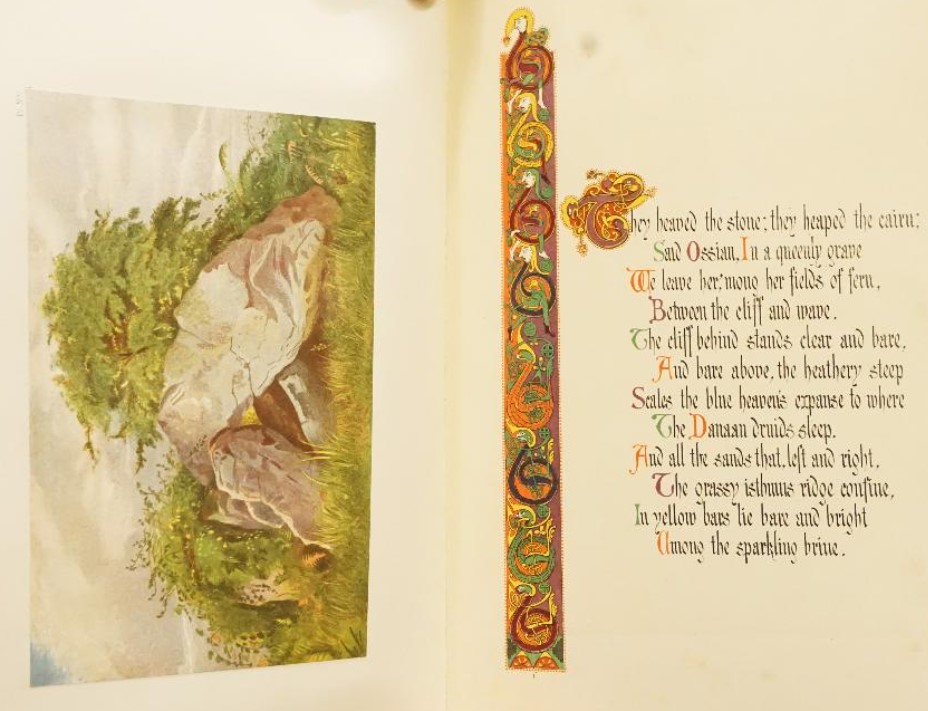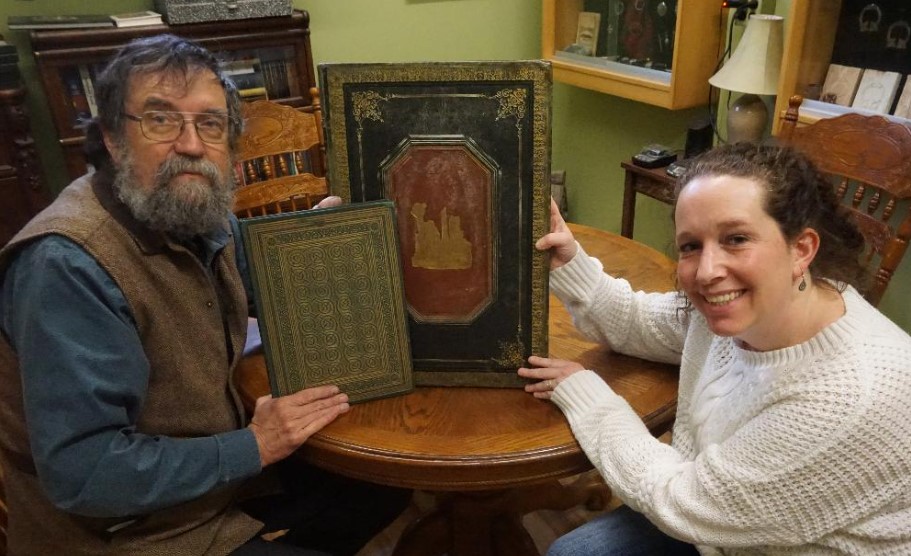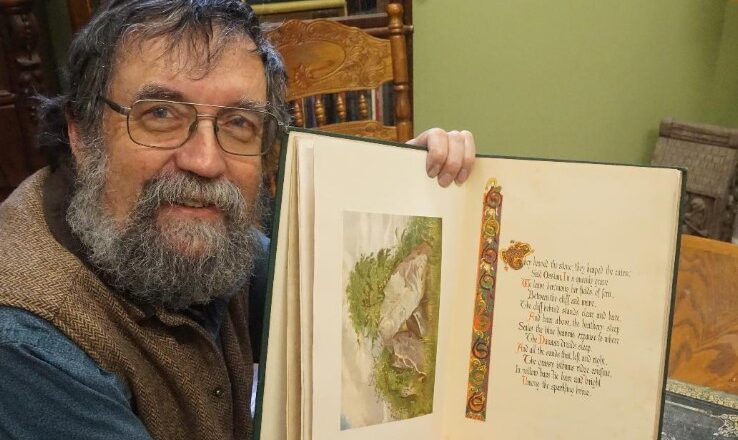Estate sale find will be the topic of lecture on Celtic Art
From Stephen Walker, Andover NY
In the month of March the shamrockery of the Saint Patrick’s Day festivities tend to overshadow some of the more sophisticated aspects of Irish Culture. The Emerald Isle has long been a haven for artists, poets, and writers. A rare book that is a fine example of Irish artistry and scholarship has been acquired by Walker Metalsmiths in Andover, NY. The Cromlech on Howth is a beautifully illustrated and illuminated poem published in 1861.
Stephen Walker will be featuring this book in a lecture on the Folklore of the Celtic Revival this June in Downpatrick, Northern Ireland. The Cromlech on Howth book is a time capsule that informs of the attitudes and imagination that inspired the revival of medieval Celtic art in the middle of the 19th century.
Stephen Walker, founder of the Andover, NY Celtic jewelry business, used images from The Cromlech on Howth in several prior presentations on Celtic art. In 2006 Walker was invited to speak on the subject at the University of Melbourne in Australia. That lecture and several publications about authenticity and meaning in the reuse of medieval Celtic art themes in modern times will be continued this spring in Downpatrick.
This famous book is difficult to find in well preserved, intact condition. Few were printed and some of those have been dismembered so that their most beautiful color plates can be sold individually. Walker says, “I have been looking for a complete copy of this book for many years. The one I finally was able to purchase had been in the library of a Highland Scottish gentleman who recently passed away.”

Three generations of Irish antiquarians and artists collaborated to create this book. The book combines the talent of poet Sir Samuel Ferguson, 1810-1886, with that of artist Miss Margaret Stokes, 1832-1900, and Dr. George Petrie, 1790-1866, who provided antiquarian commentary.
Sir Samuel Ferguson was a barrister and poet with antiquarian interests. The poem in this book is typical of his interpretations of the Irish mythological and Bardic tradition. The subject of the poem is the Cromlech, a neolithic massive stone monument that is recorded to be the tomb of Aideen, wife of the great warrior chief Oscar. Legend has it that Aideen died of grief at the news of her husband’s death at the Battle of Gavra. Interest in Ireland’s legends and mythology was gaining popularity among Ireland’s literary and cultural leaders as the country was recovering from the horror and humiliation of the Potato Famine of the 1840s.
Dr. George Petrie is credited with the “revised” notes on Celtic ornamental art in the book. Petrie was a prominent artist and antiquarian. Under his leadership he transformed the collection of the Royal Irish Academy into the National Museum of Ireland. It is unclear who wrote the notes before they were revised as both Ferguson and Stokes also did write on antiquarian subjects. In 1861 Petrie’s status as the leading expert on Celtic art would have brought considerable prestige to the project.
The book is created as an art object in itself, what we would today call a coffee table book. The poem would have easily fit on one or two pages, had it been set in standard type. The poem is instead written out in beautiful calligraphy, illuminated with Celtic designs over fourteen pages along with a fully decorated title page adapted from the famous 9th century Irish manuscript, the Book of Kells. The Celtic art along with seven full page, color landscape paintings were all created by Miss Margaret Stokes.
Interestingly, Stokes is only mentioned by a monogram of her initials on the title page, as it was not considered appropriate for a woman to endeavor in such a professional project in those days. Although much of what she did as an antiquarian and artist was done anonymously in her younger years, by the time of her death in 1900, she was famous. Her talent and expertise were acknowledged in an obituary stating, “Never again will ancient Irish art have a truer or more painstaking historian; and never again can any other pen so faithfully illustrate the glorious remains of pre-Norman Ireland.”*
Walker’s lecture will be part of the Second International Day of Celtic Art Conference hosted by the Saint Patrick Centre in Downpatrick. Artists and scholars involved in the study and creation of Celtic art will meet from June 8-11 to share information and encouragement of this ancient art form.
On June 1st Walker will present a run-through of his presentation for local audience at the Allegany County Historical Society Museum on East Greenwood Street in Andover. The free lecture will begin at 6:30 PM.
- W. FitzGerald writing in the Journal of the County Kildare Archaeological Society 1901.








